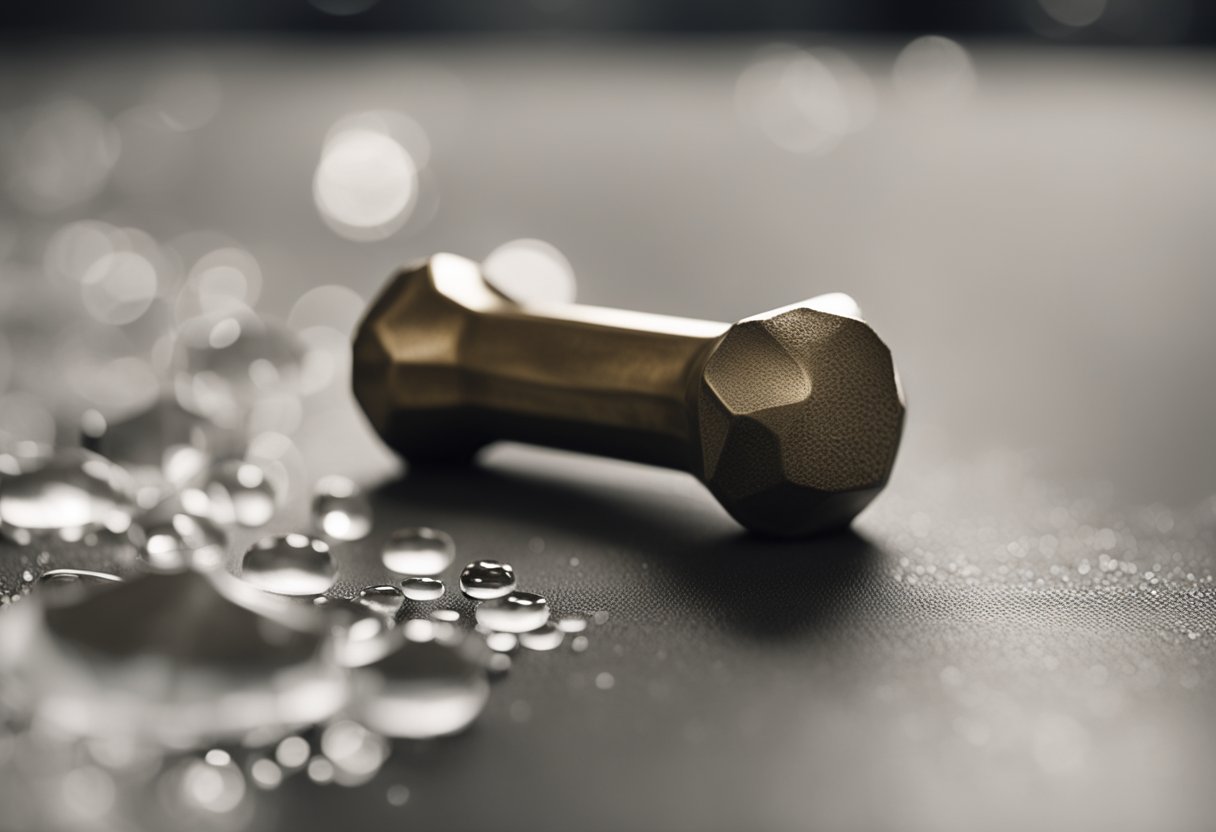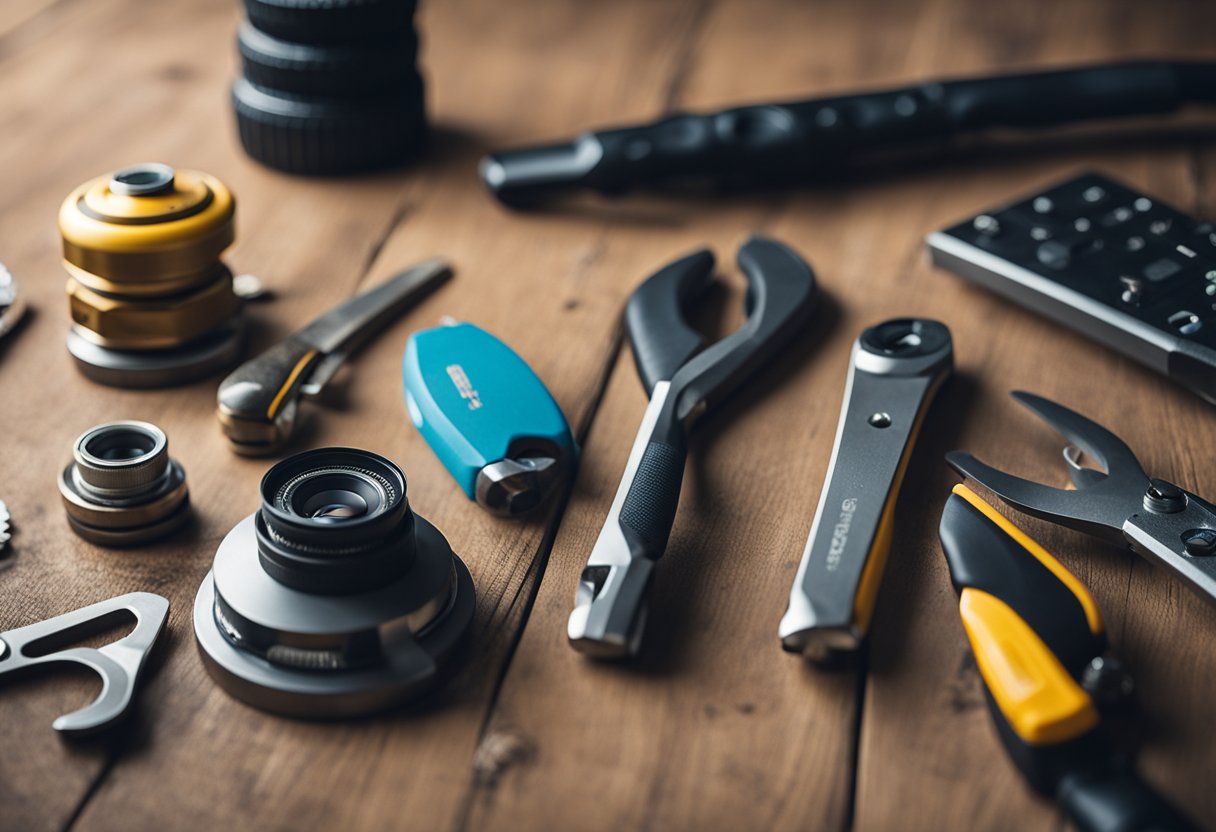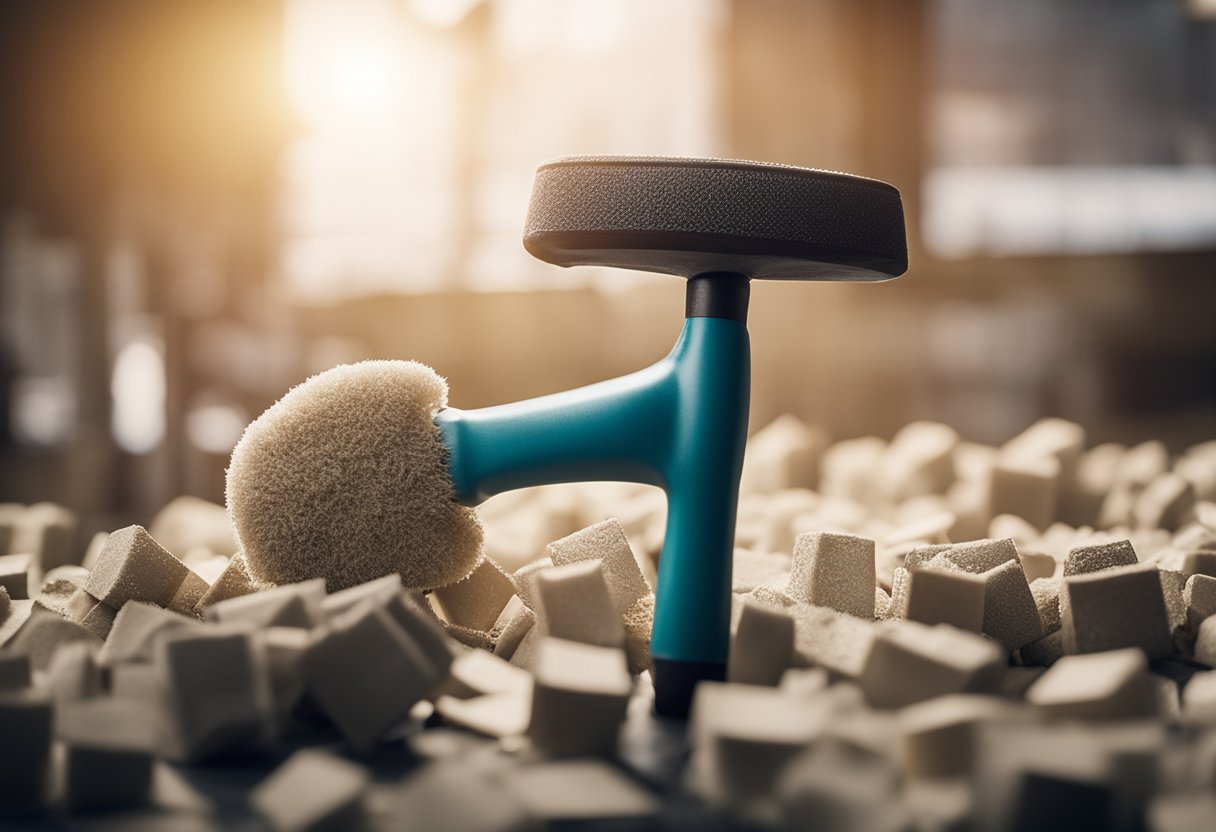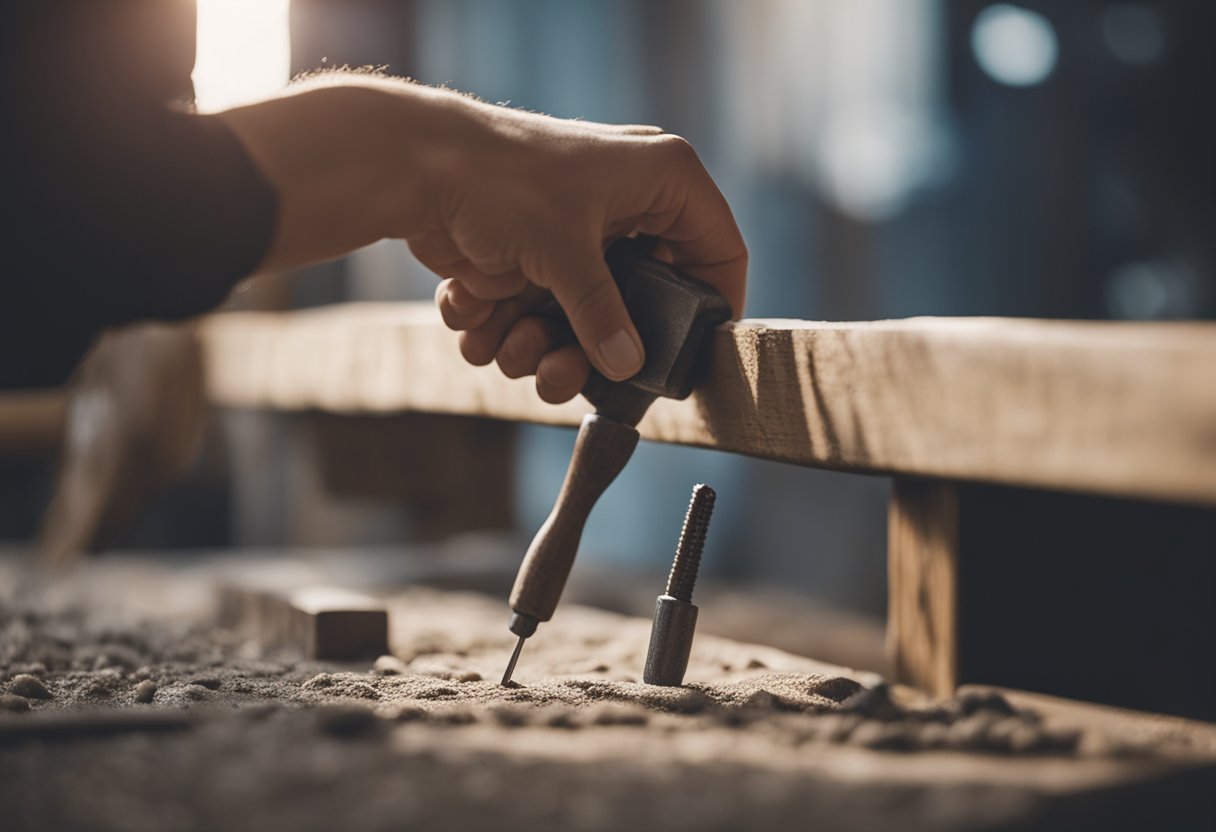Hammering can be a noisy and disruptive task, especially if you live in an apartment or have close neighbors. Fortunately, there are ways to hammer quietly and minimize the noise pollution. In this article, I will share my knowledge and experience on how to hammer quietly and provide you with some useful tips and techniques.
Understanding the basics of hammering is crucial to hammering quietly. Choosing the right tools, preparation before hammering, techniques for quiet hammering, safety measures while hammering, and advanced tips for quiet hammering are some of the topics that we will cover in this guide. With the right tools, preparation, and techniques, you can hammer quietly and get the job done without disturbing others.
Key Takeaways
- Hammering can be a noisy and disruptive task, but there are ways to hammer quietly and minimize the noise pollution.
- Understanding the basics of hammering, choosing the right tools, preparation before hammering, techniques for quiet hammering, safety measures while hammering, and advanced tips for quiet hammering are crucial to hammering quietly.
- With the right tools, preparation, and techniques, you can hammer quietly and get the job done without disturbing others.
Understanding the Basics of Hammering
As someone who has worked on many DIY projects, I know that hammering can be a noisy task. However, with a few simple techniques, you can learn how to hammer quietly and avoid disturbing your family or neighbors.
When hammering, it’s essential to use the right tool for the job. A hammer is typically used for driving nails into wood or other materials, while screws require a screwdriver or drill. If you’re driving nails, make sure to use the correct size and type of nail for your project.
One of the most important factors in hammering quietly is to use a soft-faced hammer. Soft-faced hammers make less noise than hard-faced ones because they reduce the force going to the nail, resulting in lower impact noise. If you don’t have a soft-faced hammer, you can wrap a regular hammer in a thick cloth or towel to help dampen the sound.
Another tip for hammering quietly is to tap softer or apply less pressure. Sometimes, a nudge or a few gentle taps are enough, and you don’t need to strike with much force. Less force applied means less noise produced!
When driving nails, it’s crucial to hold the nail firmly in place with your fingers or a pair of pliers to prevent it from moving around. This will help you avoid hitting your fingers and reduce the chance of bending the nail.
In summary, hammering quietly requires using the right tool for the job, using a soft-faced hammer, tapping softer, and holding the nail firmly in place. By following these simple techniques, you can hammer quietly and avoid disturbing others while working on your projects.
Choosing the Right Tools
https://www.youtube.com/watch?v=3QBYNh-JVxg&embed=true
When it comes to hammering quietly, choosing the right tools is essential. There are several types of hammers available, each designed for specific tasks. Selecting the right hammer can help you hammer quietly and efficiently.
Types of Hammers
One of the best ways to hammer quietly is to use a rubber mallet or a soft-faced hammer. These hammers are designed to absorb the impact of the blow, reducing the noise level. Unlike traditional hammers, rubber mallets and soft-faced hammers are ideal for delicate surfaces such as tiles, wood, and drywall.
Another option is to use a quiet hammer. These hammers are specifically designed to reduce noise levels, making them perfect for individuals who need to hammer quietly. Quiet hammers are available in different sizes and designs, allowing you to choose the one that best suits your needs.
Nails and Screws
When hammering quietly, it’s important to use the right nails and screws. Using the wrong type of nail or screw can cause unnecessary noise, making it difficult to hammer quietly. To reduce noise levels, use nails and screws that are designed for the specific surface you are working on.
For example, if you are working on a hardwood surface, use nails that are designed for hardwood. Similarly, if you are working on a concrete surface, use screws that are designed for concrete. This will help you hammer quietly and efficiently, without disturbing others.
In summary, when it comes to hammering quietly, choosing the right tools is crucial. Consider using a rubber mallet, soft-faced hammer, or quiet hammer to reduce noise levels. Additionally, make sure to use the right nails and screws for the surface you are working on.
Preparation Before Hammering
As someone who has had to hammer nails in various locations, I know how important it is to prepare before starting any hammering project. There are a few things you can do to minimize the noise produced when hammering.
Choosing the Right Location
Selecting the right location for hammering is crucial. If you live in an apartment complex or a shared space, it’s important to consider your neighbors. Hammering can be loud, and the sound can travel through walls and floors. If possible, choose a location that is away from shared walls and floors.
Setting Up a Noise Reduction Space
One way to reduce the noise produced when hammering is to set up a noise reduction space. This can be done by placing a rubber mat or an old cloth underneath your work surface. The rubber mat or old cloth will absorb some of the impact noise produced when hammering. You can also place a rubber floor mat in the room you will be hammering in. This will further reduce the noise produced by the impact of the hammer on the floor.
Another option is to soundproof the room you will be hammering in. This can be done by using soundproofing foam or panels. These products can be placed on the walls and ceiling of the room to absorb sound waves and reduce the amount of noise that escapes the room.
In summary, before starting any hammering project, it’s important to prepare and choose the right location. Setting up a noise reduction space can also help to reduce the noise produced when hammering. By taking these steps, you can minimize the impact of your hammering on those around you.
Techniques for Quiet Hammering
When it comes to hammering quietly, there are a few techniques that can be used to dampen the noise. In this section, I will discuss two of the most effective techniques: using less force and timing your hammering.
Using Less Force
One of the main causes of loud hammering is using too much force. By using less force, you can significantly reduce the noise level. This can be achieved by using a softer hammer or by tapping the nail more gently.
Soft-faced hammers are a great option for reducing the noise level. These hammers have a face made of plastic, rubber, or other soft materials, which absorbs the impact and reduces the noise. However, it is important to note that soft-faced hammers may not be suitable for all types of nails, so make sure to choose the right hammer for the job.
Another way to use less force is to tap the nail more gently. Instead of swinging the hammer with full force, try tapping the nail with light, controlled taps. This will not only reduce the noise level but also help you achieve more precision in your hammering.
Timing Your Hammering
Timing is another important factor to consider when hammering quietly. If you are hammering during the day, you may not need to worry too much about the noise level. However, if you are hammering late at night or early in the morning, you may need to be more considerate of your neighbors.
To minimize the noise level, try to time your hammering when your neighbors are less likely to be disturbed. For example, you could hammer during the daytime when most people are at work or school. Alternatively, you could hammer on weekends when people are generally more relaxed and less likely to be bothered by noise.
In addition to timing your hammering, you can also take steps to reduce the noise level by using soft taps and a soft-faced hammer. By combining these techniques, you can hammer quietly and avoid disturbing your neighbors.
Overall, there are several techniques that can be used to hammer quietly. By using less force and timing your hammering, you can significantly reduce the noise level and be more considerate of those around you.
Safety Measures While Hammering
As someone who has worked with hammers for a long time, I know the importance of safety measures while hammering. Hammering is a simple task, but it can cause serious injuries if not done properly. Here are some safety measures that I always follow while hammering:
Wear Protective Gear
Wearing protective gear is the most important safety measure while hammering. Always wear safety glasses to protect your eyes from flying debris. Gloves can also be useful to protect your hands from getting hurt. If you are working with loud tools, wearing earplugs or earmuffs can protect your hearing.
Inspect the Hammer
Before starting any hammering project, inspect the hammer for any damage or loose pieces. This will help you avoid any unexpected surprises that can occur when using an uninspected tool. If the job requires precision, selecting a hammerhead with a narrow face is important to reduce the noise level.
Wrap the Hammer
Wrapping the hammer with a rubber band or a cloth can reduce the noise level while hammering. This is a simple and effective way to make your hammering quieter. You can also use a soft-faced hammer to reduce the noise level.
Keep a Safe Distance
Keep a safe distance from other people while hammering. This will prevent them from getting hit by flying debris or accidentally hitting them with the hammer. If you are working in a confined space, make sure that there is enough room for you to move around safely.
Conclusion
By following these safety measures, you can reduce the risk of injury while hammering. Always wear protective gear, inspect the hammer, wrap the hammer, keep a safe distance, and work in a well-lit and ventilated area. Remember, safety should always be your top priority while working with hammers.
Advanced Tips for Quiet Hammering
https://www.youtube.com/watch?v=2TTaES0yNAs&embed=true
Using a Bench Block
When hammering nails, the sound produced can be amplified by the surface on which you are hammering. To reduce the noise, you can use a bench block, which is a small piece of wood or rubber used to absorb the sound of the hammer hitting the nail. A rubber bench block is particularly effective as it absorbs more sound than a wooden one.
To use a bench block, simply place it underneath the material you are hammering into. This will help to muffle the sound of the hammer hitting the nail and reduce the amount of noise produced.
Using a Nail Set
Another way to reduce the noise produced when hammering is to use a nail set. A nail set is a small tool that is used to drive nails below the surface of the material, so they are flush with the surface. This helps to reduce the amount of noise produced as the hammer does not need to strike the nail as hard.
To use a nail set, first, hammer the nail into the material until it is almost flush with the surface. Then, place the nail set on the head of the nail and tap it gently with the hammer until the nail is below the surface of the material. This will help to reduce the amount of noise produced during the hammering process.
By using a bench block and a nail set, you can significantly reduce the amount of noise produced when hammering nails. These tools are easy to use and can be found at most hardware stores. Incorporating these advanced tips into your hammering technique will help you to work quietly and efficiently.
Special Considerations for Different Scenarios
https://www.youtube.com/watch?v=hXjUj3L06MY&embed=true
Hammering in an Apartment
If you live in an apartment, hammering can be a tricky task as you don’t want to disturb your neighbors. To reduce the noise level, you can use a soft-faced hammer, as it produces less noise than hard-faced varieties. You can also place a thick piece of cloth or a rubber mat under the object you are hammering to reduce the impact noise. Another option is to hammer during the day when your neighbors are less likely to be sleeping or resting.
If you have to hammer at night, it is important to be mindful of your neighbors. You can try to hammer in a room that is farthest from your neighbors’ walls. You can also inform your neighbors in advance about your plans to hammer and ask them if they have any concerns. This can help to avoid any misunderstandings and make your neighbors more understanding of the situation.
Hammering at Night
If you need to hammer at night, you should take extra precautions to reduce the noise level. You can use a soft-faced hammer and place a thick piece of cloth or a rubber mat under the object you are hammering to reduce the impact noise. You can also hammer in a room that is farthest from your neighbors’ walls to minimize the noise level. It is important to be mindful of your neighbors and try to avoid hammering late at night when they are sleeping or resting.
In conclusion, hammering quietly is possible with the right tools and techniques. By using a soft-faced hammer and placing a thick piece of cloth or a rubber mat under the object you are hammering, you can reduce the impact noise. Hammering during the day and being mindful of your neighbors can also help to avoid any noise-related issues.
Conclusion
In conclusion, hammering quietly is not only considerate to your neighbors but also helps you maintain a peaceful environment. In this article, I have discussed various techniques on how to hammer quietly using a soft-faced hammer, wrapping your hammer in cloth, using soundproofing materials, and selecting the right hammerhead.
It is important to inspect the hammer for any damage or loose pieces before starting any hammering project. This will help you avoid any unexpected surprises that can occur when using an uninspected tool. If the job requires precision, selecting a hammerhead with a narrow face is important to reduce the noise level.
Using a soft-faced hammer or a rubber mallet will make each blow far quieter. Rubber mallets are designed to absorb shock, which reduces the amount of noise that is produced. Additionally, wrapping your hammer in cloth will help dampen the sound.
Soundproofing materials like acoustic foam, mass loaded vinyl, and sound curtains can also help reduce the noise level. These materials can be placed on the walls, ceiling, or floor to absorb sound waves and prevent them from bouncing back.
In summary, hammering quietly is achievable with the right tools and techniques. By following the tips outlined in this article, you can hammer quietly and maintain a peaceful environment.
Frequently Asked Questions
https://www.youtube.com/watch?v=WvR-kIl9Hzk&embed=true
What are some alternatives to a regular hammer for quiet hammering?
If you want to hammer quietly, you can use alternative tools such as rubber mallets, dead blow hammers, or padded hammers. These tools are designed to reduce the noise produced during hammering. You can also use a hammer with a soft face or wrap the hammer with a sound-dampening material to reduce the noise.
How can I reduce the noise when hammering at night?
If you need to hammer at night, you can use a soundproof box or a soundproof room to reduce the noise. You can also use a hammer with a soft face or wrap the hammer with a sound-dampening material to reduce the noise. Additionally, you can try to hammer as softly as possible and avoid hammering on hard surfaces.
Is a soft-faced hammer quieter than a regular hammer?
Yes, a soft-faced hammer is quieter than a regular hammer. Soft-faced hammers are designed to reduce the noise produced during hammering. The force going to the nail is reduced, so there is lower impact noise. However, it is important to note that a soft-faced hammer may not be suitable for all types of hammering tasks.
What are some tips for hammering quietly?
There are several tips for hammering quietly. You can use a hammer with a soft face, wrap the hammer with a sound-dampening material, or use alternative tools such as rubber mallets or dead blow hammers. Additionally, you can try to hammer as softly as possible and avoid hammering on hard surfaces. It is also important to inspect the hammer before starting any hammering project to avoid any unexpected surprises that can occur when using an uninspected tool.
How much noise does a hammer typically make?
The amount of noise a hammer makes depends on several factors, such as the type of hammer, the force applied, and the surface being hammered. However, hammers typically produce a loud noise that can be disturbing to others.
What is the best way to hammer without making too much noise?
The best way to hammer without making too much noise is to use a hammer with a soft face or wrap the hammer with a sound-dampening material. You can also use alternative tools such as rubber mallets or dead blow hammers. Additionally, you can try to hammer as softly as possible and avoid hammering on hard surfaces. It is also important to inspect the hammer before starting any hammering project to avoid any unexpected surprises that can occur when using an uninspected tool.

Hi, I’m Sal Muller of Tooltrip.com. My DIY experience led me to understand essential power tools for home projects. Tooltrip.com guides enthusiasts and professionals in choosing right tools for any job. I provide concise top tool reviews for easier, efficient DIY.







